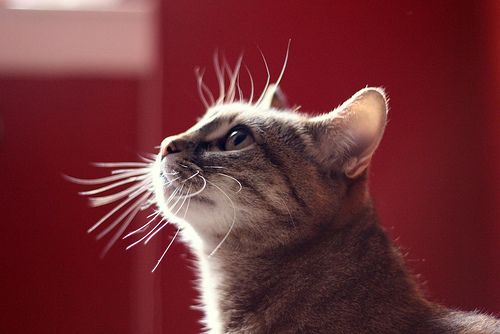Flickrs: dano272
Cat whiskers are known to serve as measuring tools for cats. They use the width of their whiskers and sides of their face to help them navigate through tight quarters.
This explains why a larger sized cat is usually equipped with longer whiskers. However, not all cats rely on their whiskers to get through a small entrance. Most Sphynx cats do not have whiskers. They utilize their muzzle primarily in gauging small openings.
Cat whiskers are more than just measuring tools. They are crucial when it comes to a cat's hunting instinct. Cats utilize whiskers to scan possible prey within their vicinity. The most fascinating fact about cats' whiskers is that they can sense prey in the area simply through the nerves in their whiskers. The nerves send out all kinds of information to a cat's brain almost in a supersensory fashion.
Besides the whiskers positioned on their upper lip, cats have whiskers in other parts of their body too. They are all designed for different purposes:
Eye Whiskers
Cats have whiskers above their eyes to provide a blinking reflex, so when foreign objects are flying into their eyes, the whiskers signal the brain to quickly close the eyes in order to shield them from the flying debris.
Whiskers under the Chin
There are also whiskers under a cat's chin. These whiskers sense objects from below the chin to help cats navigate.
Whiskers on the front Legs
They may be hard to see in some breeds, but cats use these whiskers to help them attain safe landings as well as to detect presence of prey.
Cats express their moods via their whiskers. When they are content, their whiskers are held to the side of their face. When they feel intimidated or alerted, their whiskers will point forward.
Facts about Whiskers:
1. A cat's whiskers are about twice as thick as their hair.
2. Their whiskers are rooted three times deeper than their hair.
3. A cat usually has 8 - 12 long whiskers on each side.
4. Cats lose a few whiskers at a time when they shed, but they don't lose all their whiskers at one time.
5. It usually takes about two or three months for whiskers to grow back.
